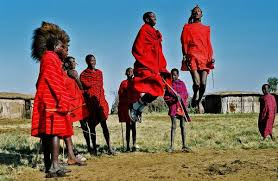In many shamanic societies, if you came to a shaman or medicine person complaining of being disheartened, dispirited, or depressed, they would ask one of four questions. When did you stop dancing? When did you stop singing? When did you stop being enchanted by stories? When did you stop finding comfort in the sweet territory of silence? Where we have stopped dancing, singing, being enchanted by stories, or finding comfort in silence is where we have experienced the loss of soul. Dancing, singing, storytelling, and silence are the four universal healing salves.
(Angeles Arrien in the forward to Gabrielle Roth’s Maps to Ecstasy: The Healing Power of Movement.)
In indigenous societies, dancing, singing, storytelling, and finding comfort in silence are all part of everyday life. But the fact is that many of us in our western societies have lost our opportunities to dance, sing, tell and listen to stories, and sit in silence, and in doing so have lost the joy which these practices bring.
This past week I have had my share of these healing salves, and I have to tell you that they really do work.
A few weeks ago, I joined a choir. After the first couple of weeks of feeling a little shy and awkward as I learned the songs and how the choir operated, this week I felt the true joy of singing. We even incorporated a few dance steps into our singing, which enhanced the experience even more.
However, I was also able to feel the joy of dancing earlier in the week, at my 60th birthday party. I made sure everyone knew that they needed to bring their dancing shoes, and I spent most of the evening on the dance floor, having a ball.
I felt like it was a once in lifetime experience, and I told everyone that my next party would be in another 60 years. I am hoping that I will still be able to do “Nutbush” when I am 120.
If my aim is to remain fit and healthy enough to do “Nutbush” at the age of 120, I know I’m going to have to continue to practise dancing, even if I don’t get to do it at a party.
If I am to remain fit and healthy, chances are I will need to practise all of these healing salves.
Sitting in silence is practised by most indigenous peoples. Although they might look like they are sitting sleeping, or staring into space, they have learned to communicate with the divine, with their ancestors, with animals, and with Mother Earth. Sitting in silence is a practice which our own society is only now beginning to relearn. Many of us now incorporate meditation into our daily schedules.
Although, as children, we were keen to hear bedtime stories, we rarely heard the stories of our own people, of our ancestors, but often the fictitious works of foreigners. We never learned the art of storytelling as young indigenous people do, and our eagerness to listen seemed to diminish with age. Or perhaps it was that, as we grew up, we had trouble finding anyone willing to tell us stories any more.
For most of us, singing is another forgotten art. Rather than being a regular practice as it has been for indigenous peoples, we are lucky if we get to sing along to the radio, or perhaps break into song in the shower. The choir is helping me to rediscover this healing salve.
As I found out at my birthday party, little girls always want to dance. Perhaps the boy children at the party were old enough to already be indoctrinated into the limiting beliefs which our society has instilled in them: big boys don’t dance. It always seems harder to get the boys up to dance, have you noticed?
But big boys do dance in many other cultures – in most other cultures. In traditional Masai, Zulu, Aborigine, Native American, Maori cultures, men dance daily. Perhaps it’s time to start changing our indoctrination towards making dance ok for boys as well as girls.
Perhaps it’s time to start teaching our children the benefits of all of these healing salves, of singing, of dancing, of storytelling, and sitting in silence, and encourage them to carry these practices with them into adulthood. Perhaps, as well as being able to do “Nutbush” at 120, those children will grow up never knowing what it is like to be disheartened, dispirited, or depressed.
https://www.youtube.com/watch?v=LUID0jSh2Ic


Leave A Comment